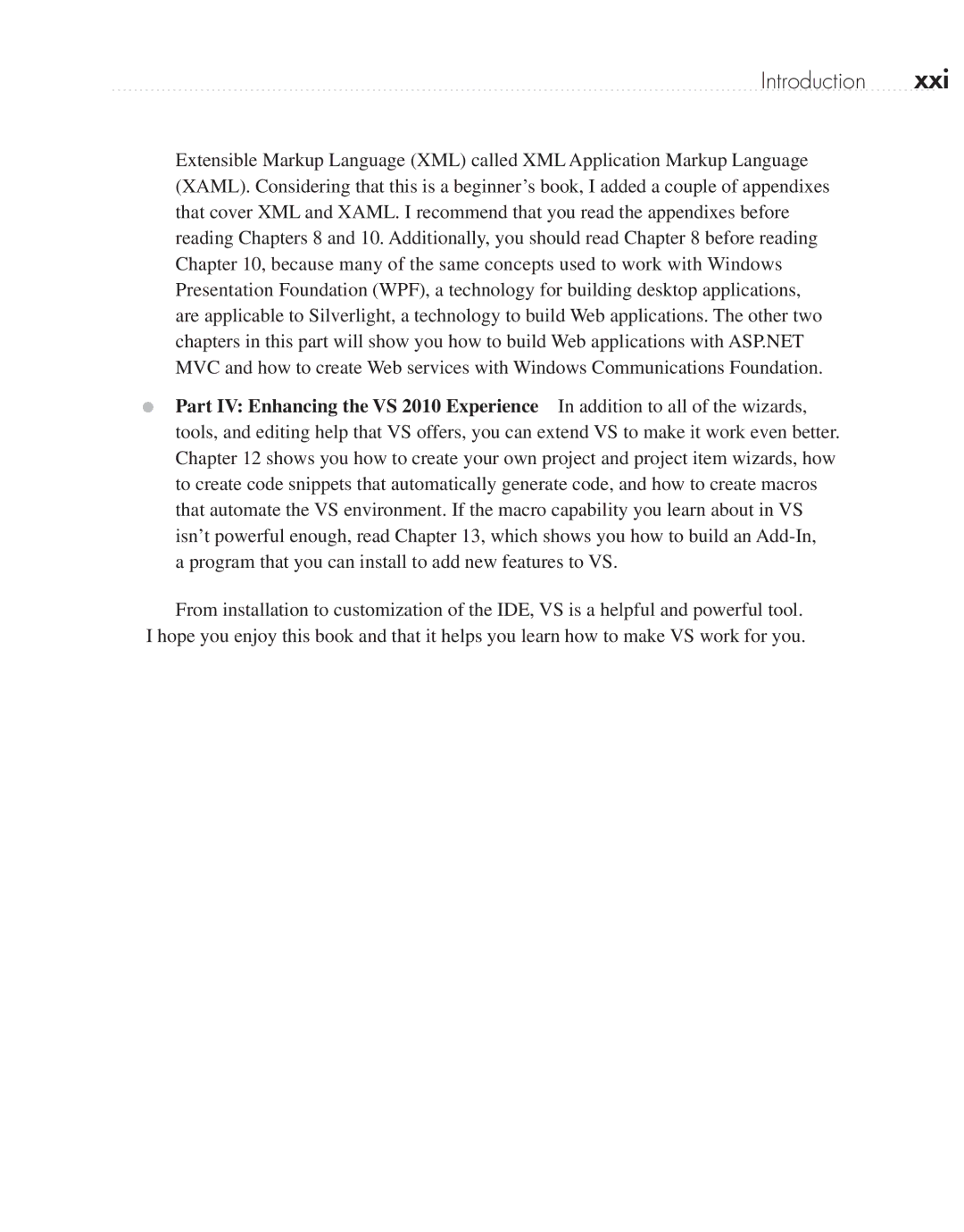Introduction xxi
Extensible Markup Language (XML) called XML Application Markup Language (XAML). Considering that this is a beginner’s book, I added a couple of appendixes that cover XML and XAML. I recommend that you read the appendixes before reading Chapters 8 and 10. Additionally, you should read Chapter 8 before reading Chapter 10, because many of the same concepts used to work with Windows Presentation Foundation (WPF), a technology for building desktop applications, are applicable to Silverlight, a technology to build Web applications. The other two chapters in this part will show you how to build Web applications with ASP.NET MVC and how to create Web services with Windows Communications Foundation.
● Part IV: Enhancing the VS 2010 Experience In addition to all of the wizards, tools, and editing help that VS offers, you can extend VS to make it work even better. Chapter 12 shows you how to create your own project and project item wizards, how to create code snippets that automatically generate code, and how to create macros that automate the VS environment. If the macro capability you learn about in VS isn’t powerful enough, read Chapter 13, which shows you how to build an
From installation to customization of the IDE, VS is a helpful and powerful tool. I hope you enjoy this book and that it helps you learn how to make VS work for you.
